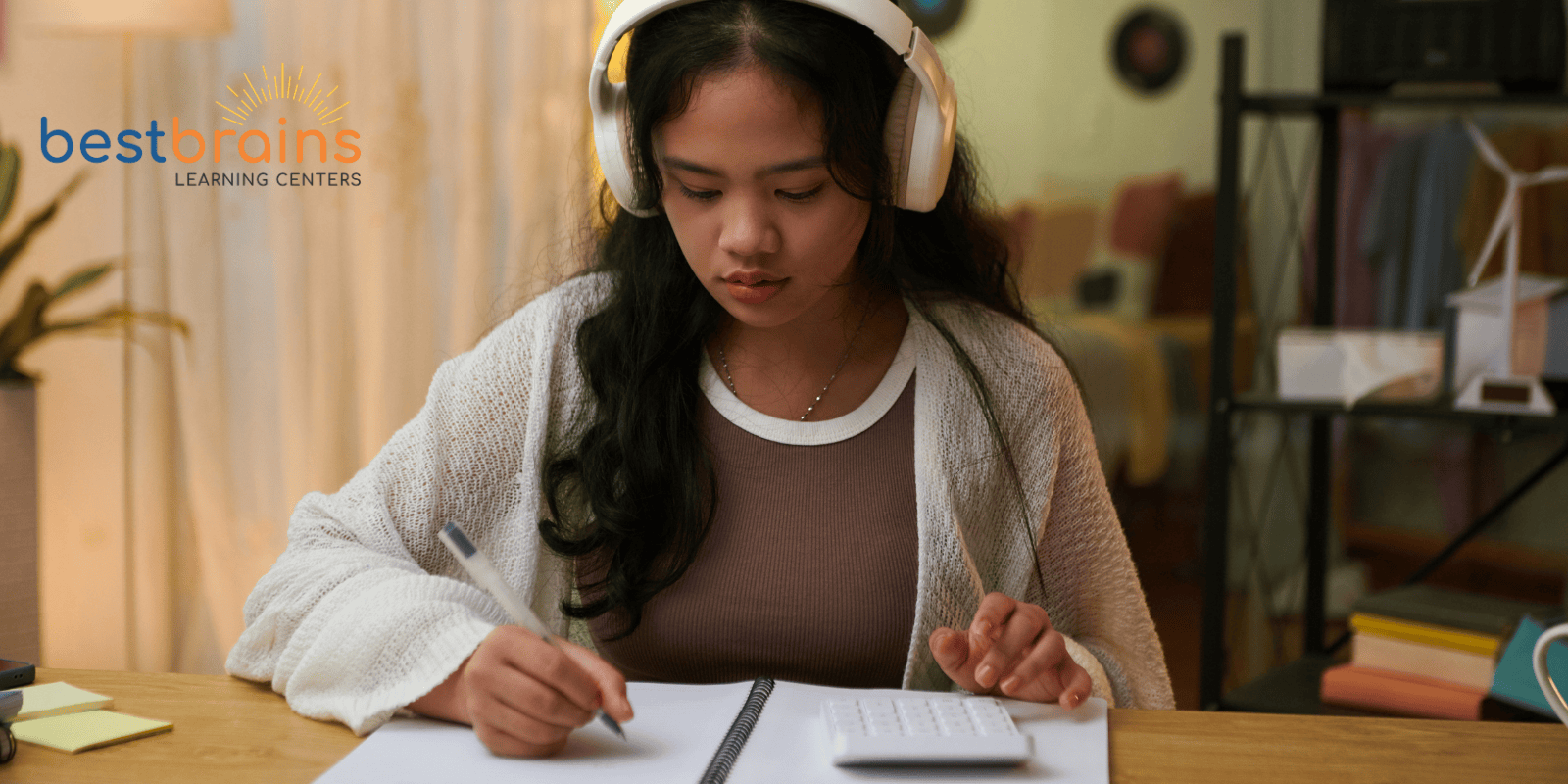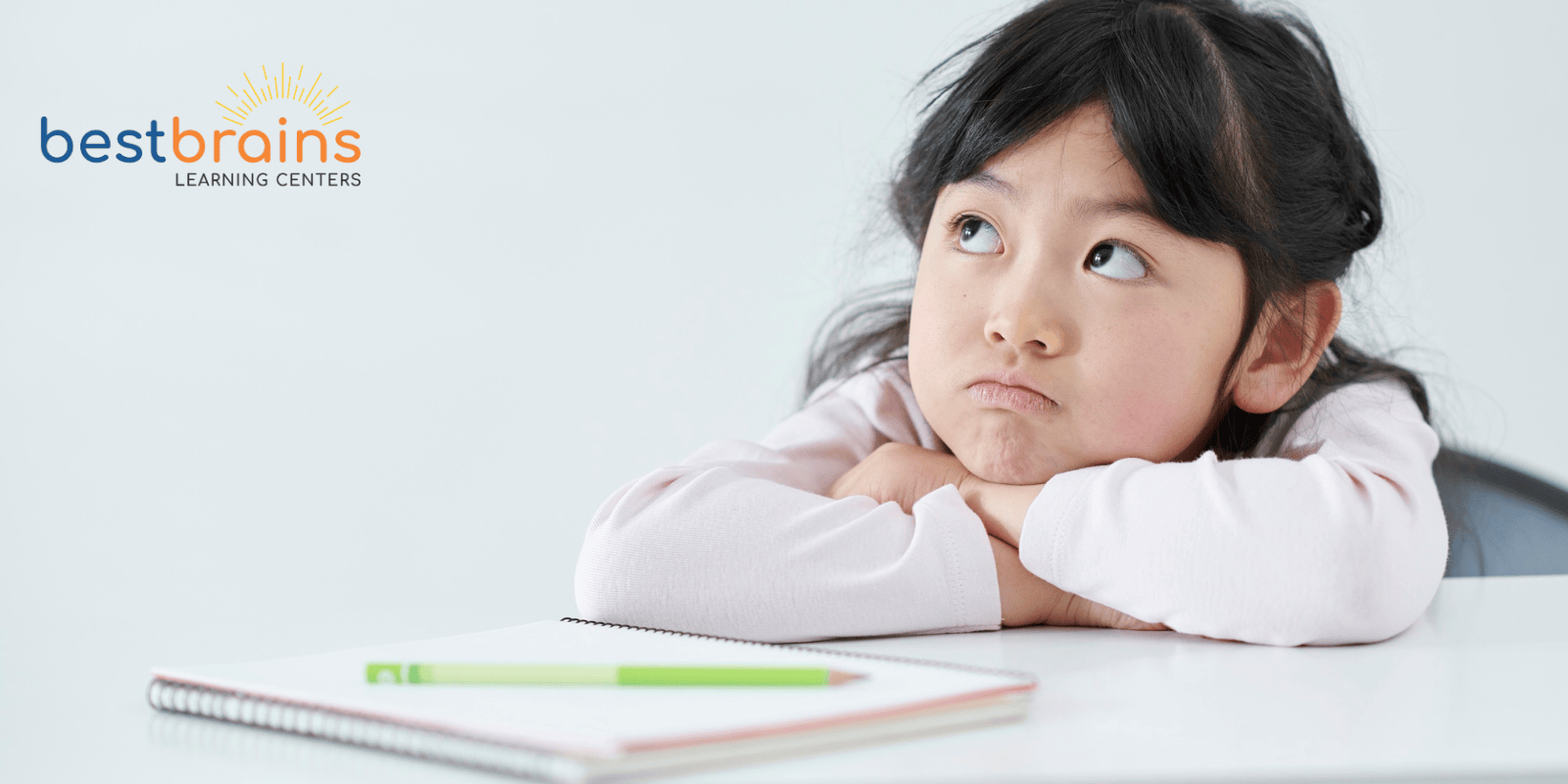Mechanicsburg
Why Screen Time Can Hinder Learning: The Benefits of Print-Based Education for Children
The Hidden Dangers of Screen Time—Even for Educational Purposes
At Best Brains Mechanicsburg, we’re committed to using learning materials that promote effective, lasting learning, which is why our students engage with carefully crafted booklets instead of screens. While educational apps and programs may seem beneficial, a growing body of research suggests that screen-based learning may not support young brains in the ways we think it does. Here’s a closer look at the science behind why printed materials provide such powerful advantages—and why too much screen time can hinder rather than help learning.
How Screen Time Affects Young Brains
Screens are everywhere, and they offer quick, engaging interactions that seem perfect for children. However, the way digital content stimulates the brain can actually undermine the very learning goals parents and educators have. Studies have shown that screens, particularly when used excessively, can lead to problems in attention, memory retention, and even emotional regulation:
-
Disrupted Attention: The rapidly changing images, sounds, and colors on screens condition children to expect instant rewards and novelty, which can affect their attention spans. The brain becomes accustomed to fast-paced stimuli, making it harder for children to focus on less-stimulating but more meaningful tasks like reading and problem-solving on paper.
-
Inhibits Deep Processing and Retention: When information is presented on a screen, children are less likely to process it deeply. Brain science has shown that the “physicality” of interacting with a book, such as turning pages and seeing progress, can enhance memory and comprehension. Printed materials encourage a form of slow, deliberate learning, allowing children to absorb concepts at a more natural pace.
-
Negative Impact on Sleep and Emotional Health: Studies indicate that screen time, particularly before bed, can interfere with sleep patterns. Good sleep is essential for focus, memory, and emotional health, making it a critical factor for young learners. Additionally, excess screen time has been linked to anxiety and depression in young people, reinforcing the importance of moderation.
The Benefits of Booklet-Based Learning
Printed materials, like our Best Brains booklets, encourage active, focused engagement that digital media often cannot. Here’s how learning with booklets supports brain development in lasting, meaningful ways:
-
Promotes Focus and Self-Regulation: When children read and solve problems on paper, they are more likely to focus and complete tasks without the endless array of digital distractions. This single-task focus supports executive functioning skills, which are essential for goal-setting, task completion, and even emotional regulation.
-
Enhances Comprehension and Long-Term Retention: Unlike digital media, printed materials encourage children to spend time on each page, fostering deep processing. According to cognitive research, physical materials activate the brain’s spatial memory, allowing students to form stronger mental representations of the content they’re learning.
-
Reduces Eye Strain and Physical Fatigue: Screen use often leads to eye strain and fatigue, especially for younger children. Studies have shown that children who rely on screens for learning experience physical discomfort and are more likely to disengage from the learning material. In contrast, reading from paper and writing in booklets provide a break from screens, encouraging physical and mental well-being.
Striking the Balance
While technology has become an integral part of our lives, learning how to manage screen time is crucial. At Best Brains, we carefully structure lessons and activities to ensure that each child builds a strong foundation in math, reading, and critical thinking without relying on screens. Through our booklet-based approach, we aim to empower students with focus, discipline, and the cognitive skills they need to thrive academically.
In a world where screens are the norm, we’re proud to offer a learning experience that builds lasting skills and a love for learning beyond the digital realm.
Bibliography
-
Christakis, D. A., & Zimmerman, F. J. (2009). "The Impact of Background Television on Parent–Child Interaction." Child Development, 80(5), 1235-1241. doi:10.1111/j.1467-8624.2009.01301.x.
-
Giedd, J. N. (2012). "The Digital Revolution and Adolescent Brain Evolution." Journal of Adolescent Health, 51(2), 101-105. doi:10.1016/j.jadohealth.2012.06.002.
-
Hosokawa, R., & Katsura, T. (2018). "Association between mobile technology use and child adjustment in early elementary school age." PLOS ONE, 13(7): e0199959. doi:10.1371/journal.pone.0199959.
-
Kucirkova, N., & Littleton, K. (2016). "The Digital Reading Habits of Children: A National Survey of Parents’ Perceptions of and Practices in Relation to Children’s Reading for Pleasure with Print and Digital Books." Journal of Children and Media, 10(3), 304-320. doi:10.1080/17482798.2016.1158352.
-
Mangen, A., & Kuiken, D. (2014). "Lost in an iPad: Narrative engagement on paper and tablet." Scientific Study of Literature, 4(2), 150-177. doi:10.1075/ssol.4.2.02man.
-
Rich, M. (2015). "The Benefits and Drawbacks of Reading on Digital Devices." The New York Times. Retrieved from https://www.nytimes.com.
-
Sigman, A. (2012). "Time for a view on screen time." Archives of Disease in Childhood, 97(11), 935-942. doi:10.1136/archdischild-2012-302196.
-
Twenge, J. M., & Campbell, W. K. (2018). "Associations between screen time and lower psychological well-being among children and adolescents: Evidence from a population-based study." Preventive Medicine Reports, 12, 271-283. doi:10.1016/j.pmedr.2018.10.003.
-
Wolf, M. (2018). Reader, Come Home: The Reading Brain in a Digital World. New York: Harper.




